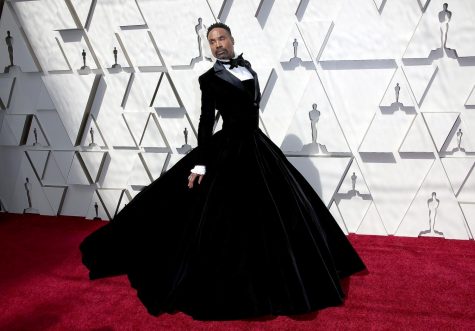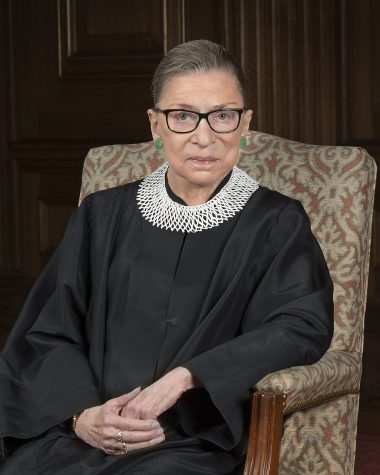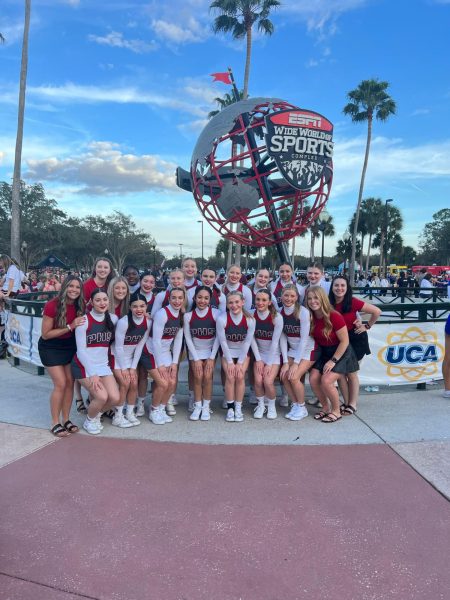Breaking Barriers in Fashion One Day at a Time
Starting at birth, people are automatically sworn to gender conformities based off the color of the blanket they are swaddled in. Boys would be swaddled in blue blankets while girls were swaddled in pink blankets. These specific colors have been a large representation of gender for a very long time.
Girls are more commonly expected to wear skirts and dresses while boys are the ones seen to be wearing pants or suits to emulate authority.
However, people have slowly started to sway away from these fashionable gender norms and have explored more fluid ideas of fashion whether that be through trying new pieces of clothing that normally don’t appeal to specific genders such as skirts or suits, or experimentation with makeup. This general idea for going outside of the box through accepting and trying all articles of fashion is known as androgynous fashion. While the concept of androgyny has become more common now because of celebrities such as Zendaya and Harry Styles, it has actually been prominent for centuries.
It has been recorded that in Ancient Egypt, Queen Hatshepsut ruled as a pharaoh known for wearing the infamous headdress with the men’s kilt and a fake beard. Her reasoning behind wearing what men would normally wear as pharaohs were to get people to accept her as a pharaoh by appearing more masculine.
Prior to the 19th century, European male aristocrats were known for wearing colorful outfits with frills along with wigs that made them seen as having long hair in order to cover their bald spots. According to Fastcompany.com, once the early 1800s came around, men were seen wearing tailored suits in neutral colors to depict power and in some cases, wealth. Some even went to far lengths such as wearing corsets to maintain a thinner figure. Men were going out to work in these suits to look more polished during the period after the industrial revolution, so colorful pieces were seen as something normal for a female to wear stereotypically.
Moving on to World War II where men were fighting battles and women had to work to keep the economy stable, women were seen wearing jumpsuits, suits, and other male correlated pieces due to the jobs they took. They were seen as mechanics, police officers, business workers, and more while the men were off. This spike in women wearing these pieces became an amplifier for the change in fashion.
Artists such as Prince and David Bowie toyed with the idea of breaking gender norms in fashion. Prince especially was known for exploring different endeavors of fashion whether it be more feminine or masculine. He was known for wearing frilly shirts, high heels, and lace gloves and would top the look off with eyeliner to embrace the fluidity he represented. Common people along with celebrities around the world such as Frank Ocean were inspired by his fluidity when it came to gender conformity and expression.
Now in the 21st century, more and more celebrities are embracing an androgynous style. Singers such as Harry Styles and Janelle Monáe have broken barriers in fashion by experimenting with different styles. Harry Styles wore a dress on the most recent issue of U.S. Vogue which brought both backlash and praise from millions of people across the country. Janelle Monáe has been known for wearing all sorts of varieties of suits since she entered the mainstream industry in 2008.
When it comes to fashionable actors, Zendaya and Billy Porter come to mind. While Zendaya has always been known for wearing different styles of clothing whether it be dresses or suits, she launched her own gender-neutral line called Daya by Zendaya back in 2016. In January 2018, Zendaya unaffiliated herself with the brand due to many customer complaints and ordering issues causing the brand’s status to be inactive. However, it was still a solid attempt at promoting fluidity in fashion.
Billy Porter is known for his extravagant red carpet looks that always steal the show. In 2019, the Pose star was seen wearing a tuxedo jacket with a black velvet gown at the Oscars which made headlines in numerous publications such as Elle and Time Magazine. Billy told Time Magazine that his logic for deciding the outfit was this: “My goal is to be a walking piece of political art every time I show up. To challenge expectations. What is masculinity? What does that mean? Women show up every day in pants, but the minute a man wears a dress, the seas part.”
History along with many celebrities such as Prince, Zendaya, Billy Porter, and Harry styles just to name a few have challenged the ideas of what can be seen as normal in fashion. Common people have charged a massive appeal towards the idea of breaking barriers and embracing androgynous fashion through the increase in women wearing suits, men wearing skirts or more feminine colors, and even women rocking short hair.

Your donation will support the student journalists of Parkland High School. Your contribution will allow us to purchase equipment and cover our annual website hosting and printing costs.

Gianna is a senior in her second year in the Trumpet Newspaper. She likes to write different pieces about anything ranging from fashion to politics....













